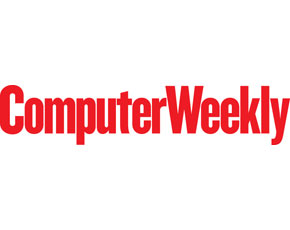The Computer Weekly Buyer's Guide will map the IT buying cycle of our readership onto relevant editorial that will inform and educate readers and help them towards making the right buying decision.
On a three week cycle the publication will run a series of articles on a particular category of software/hardware/IT service, which will on a weekly basis. Articles will run in the features section in the Computer Weekly ezine, which can be downloaded as a PDF, and as an SEO-optimised Buyer's Guide page on ComputerWeekly.com. The Buyer's Guide PDF articles will point readers to the online Buyer's Guide, where they will be able to access all the articles in one place, along with additional content, such as blog posts, and related articles.

We will produce a quarterly schedule of Buyer's Guides, allowing us to keep topical and also respond to short-term commercial opportunities.
Buyer's Guides will be organised into three parts, which develop into a standalone piece of evergreen content that readers can refer back to. Each part will include a written article plus relevant background material as well as exclusive online-only multimedia content and infographics.
The proposed Q1 and Q2 2013 schedule is:
Format of Buyer's Guides Market Overview
This is an introduction to the topic covered in the Buyer's Guide. The article will examine the nature of a given software/hardware/IT services product category, look at where it fits within the business, why users need it and which companies sell products in this category. Analyst Perspective
Here, Computer Weekly will invite leading IT analysts to submit relevant research that can help readers narrow down product choices with a shortlist of products they may wish to investigate further. Case Study
At this stage in the buying cycle, the reader has a shortlist and may have given his/her technical people a brief to research the products in more detail, such as by following up customer references from the supplier. Computer Weekly supports this research with an in-depth case study, selected for its uniqueness, which illustrates best practices, technical and business drivers, lessons learnt and future plans of a successful IT project using one of the products shortlisted.
Please email Cliff Saran if you would like more details.
The evolving SaaS market
Jan 8-Jan22
With Oracle's recent acquisition of RightNow and SAP buying SuccessFactors, it looks 2013 will be the year that Saas finally becomes enterprise-class software. Computer Weekly looks at how businesses and the public sector are taking advantage of this low-cost model for delivering enterprise software. We will cover aspects associated with growing maturity such as vendor-lock-in and issues relating to service levels and data sovereignty.
IT infrastructure for Big Data
Jan 29-Feb 12
The top-end of data analytics now involves high-end optimised server hardware from the likes of IBM/Netezza, Teradata, HP/Vertica together with Oracle (Exadata) and SAP (Hana). Storage suppliers like EMC and NetApps are now delivering storage subsystems optimised for big data. And virtualisation is also being optimised big data analytics through products like vFabric data director. Computer weekly will explore various configurations of IT infrastructure that are now being deployed to support big data.
Green computing
Feb 19-Mar 5
Green may be on the corporate social responsibility agenda, but being green has practical implications. For a start, large businesses need to comply with regulations to reduce carbon emission. With energy prices rising, the price of electricity is one of the big costs within a data centre. Getting enough power is also a problem limiting where data centres can be located. In this buyer's guide, Computer Weekly will explore various strategies to enable a CIO to reduce the carbon footprint of IT. The topics we will cover will include outsourcing for energy efficiency, power efficient server and data centre design, print management and energy efficient archiving.
Software defined networking
Mar 12-Mar 26
Software defined networking (SDN) allows network engineers to support a switching fabric across multi-vendor hardware and application-specific integrated circuits. A network administrator can shape traffic from a centralised control console without having to touch individual switches. SDN is also useful for maintaining service level in a could environment, by providing an API-enabled approach to manage the network and move workloads in a consistent way.
Context-aware security
Apr 2-Apr 23
IT analyst Gartner believes the next wave of IT security will be based on context. Information security infrastructure must become adaptive by incorporating additional context at the point when a security decision is made. The industry is developing next-generation endpoint, network, application and data protection platforms. Awareness of context is also being built into next-generation security information and event-management platforms. This series looks at how the technology is evolving.
Client-side computing
Apr 30 -May 14
As businesses start to support devices other than a PC, the concept of the standard Windows desktop is no longer possible. Thin client computing through software like Citrix XenDesktop and VMware View can enable IT departments to continue providing access to legacy Windows. But going forward IT departments have an opportunity to rethink desktop IT. How will businesses use HTML 5, WinRT, and native iOS and Android apps in their organisations.
Mobile Device Management
May 21-Jun 4
There are plenty of ways to provide a secure environment on mobile devices. This articles looks at the pros and cons of the different approaches IT can take to locking down devices, providing secure network access, remote wipe and enterprise app stores.
Identify and access control
Jun 11-Jun 25
IT is being pulled in multiple directions,. The command and control model of providing access to corporate systems is limiting what business can do both internally, and with external partners. At the same time, IT is responsible for protecting corporate data and ensuring only authorised people have access to it. In this series of articles Computer Weekly will look at how identify and access management is balancing the need for access with security and regulatory requirements.


